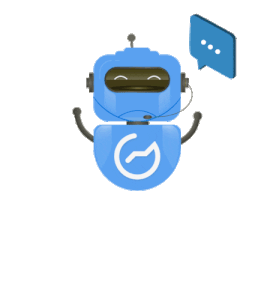

Your information is kept with the strictest confidentiality.
Click here to view our privacy statement, and to read more about our commitment to you.
HR professionals play a key role in maintaining and managing all employee issues. This includes making strategic decisions to ensure that employees have the right skills and are able to develop desired competencies in order to improve business profitability and competitiveness.
As workplaces adopt a hybrid model, with workers working both remotely and at the workplace, the services that HR delivers will also change. Many functions will require consideration for the new model of work and adapt accordingly.
In 2021, some of the key trends for learning are:
With the world shifting into remote work, many companies have rapidly brought forward their upskilling and reskilling plans.
The learning methodologies of 2021 focuses on
This ensures companies continue to close the perpetual skills gaps for the benefit of work and business performance.
There has been, and will continue to be, an increased interest in learning on the job and in the flow of work, as leaders realise the significance of applying the applicable skills in daily work.
It is the beginning of Learning and Development (L&D) becoming an everyday activity where people actively search for the trusted answers and knowledge they need to satisfy their curiosity and perform better at work.
The progression in L&D since Covid-19 is arguably greater than that seen over the last 10 years. The burning question for HR now is what holistic learning will look like moving forward.
The best answer lies in a balance of virtual L&D with the best of digital learning, underpinned by learning in context. It must support remote learners' heightened demand for value and social interaction.
Reliable learning assistants without human limitations (e.g. forgetfulness, bias, need for rest, etc.)
Engaging conversationalists who can meaningfully engage employees and offer point-of-need training
Informative databases with real-time interactions, follow-up questions and prompts to promote learning
Major time-savers for tasks such as onboarding and mandatory in-house training
Improve productivity of HR professionals by up to 45%
Estimated to cut business costs by more than US$8 billion by 2022 (source: Juniper Research)
Trainings can occur at regular intervals (bite-size learning) throughout the day, which is more efficient than full day trainings.
Able to constantly offer assistance to a learner for as long as they are needed.
Unique way to engage with learners through dialogue that is essential to the learning process
Keep learners engaged and motivated by prompting them on what to do, entertaining them whilst keeping them informed (e.g. offers words of encouragement: “Great work” or “Well done”, and giving additional information or challenges periodically)
Available 24/7 to serve the learning needs of your organisation

Requires corporate level compliance training (e.g. Interested Parties Transactions, PDPA Compliance Training etc) as part of its audit requirements and records
Administered to all employees, who are required to understand the content, followed by a simple post-course assessment
Requires refreshment every year to stay updated to current legislations
L&D section is able to load the necessary content into the chatbot and let it “conduct” the training in a conversational manner
Allows learner to be better engaged while undergoing the training
Able to administer tests midway through the training and at the end to ensure that learning objectives are met

Adopts a competency-based framework for upgrading and promotions
Lists the necessary skillsets that employees will require should they wish to work towards a promotion
Learner is able to identify his skills gap and request for training in particular areas in order to close the gap
Chatbot recommends courses to the learner or may even assist in conducting and assessing capabilities

Conducts training courses as part of its operations
Needs to check on the effectiveness of training programmes
Needs to know if certain courses are more popular than others
Able to administer two types of surveys:
1. Mid-course (for courses with multiple days) to ensure learners are able to keep up with the content
2. Post-course to receive feedback and suggestions
Able to evaluate course runs and types of courses that are more popular in order to provide courses that clients want

Includes introduction to the company (Mission, Vision, Core Values and Culture), and various compulsory courses such as Workplace Safety and Health, and Fire Safety
Courses are currently done through various media (e.g. company intranet, bite-sized videos and shared documents), which new hires may not know how to access
Chatbot serves as HR's job aid and a digital coach for new hires
Guides them through complex portions of certain trainings, and provides examples where necessary to support shared information
For assessments, it is able to administer tests and document assessment details such as scores and date completed
Frees up time for HR to focus on strategic work and improvement of processes to cater to the new norm
By eliminating the time spent on simple courses, trainers can focus on topics that require higher level thinking or complex problem solving, thus increasing the value of trainers in the workplace.
Data collected from many queries can be collated and analysed to locate training gaps, and trainers can utilise the data to structure training to be more effective and efficient.
By embracing technology in a field where human contact is highly essential, your company can be seen as progressive and innovative, making you an employer of choice.
Learners are able to receive accurate and timely responses to their queries, even during non-working hours or when training is done remotely.
If you have any enquiries, please contact us at [email protected] or call us at 6220 4008.
Alternatively, you may wish to fill out an enquiry form here.
Are you looking for a complete set of HR solutions? Click here to view the services that we offer based on your specific needs.

© EON Consulting & Training Pte Ltd
Reg. No.: 201301501N